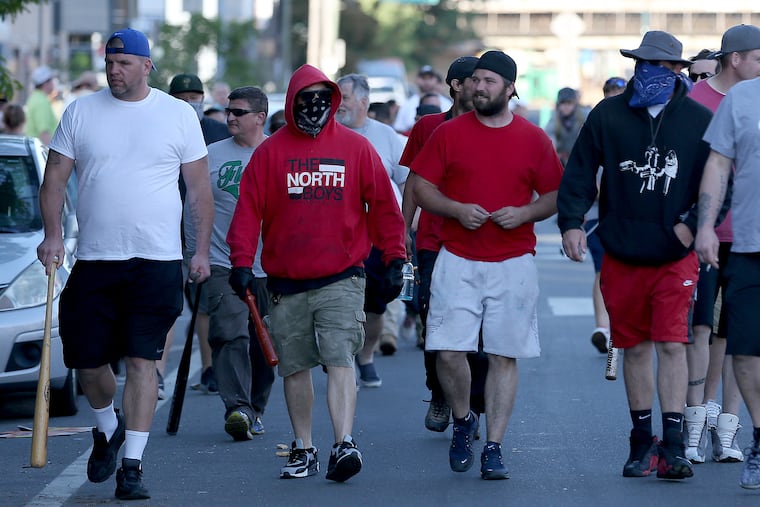Trump would like Philly’s response to protests. We’re better than this. | Editorial
If riots are the language of the unheard, the city’s response to protests over the last few days has been the language of force and confrontation, rather than a strategy of de-escalation.

The images of panicked crowds scrabbling up the embankments of I-676 to escape tear gassing on Monday will likely be one of the defining images of the protests in Philadelphia — and of the Kenney administration. Whether that tear gas was an outrageous response to a peaceful protest or, as the mayor and Police Commissioner Danielle Outlaw maintain, a justified response after protesters descended on the highway and refused to disperse, we need better answers. That it came an hour or so before peaceful protesters at a church near the White House were tear gassed in order to clear the way for President Donald Trump to pose in front of that church with a Bible links the two events.
Trump’s tear gassing followed his announcement that he will deploy the military to go into cities to quell the protests that ignited over the weekend — an astonishing declaration of war on all of the American people, not just those protesting the loss of black lives at the hands of police.
Trump has continued to drop lit matches on the fires of racism that have been burning across the country for generations, and it didn’t start with protests over George Floyd’s death.
But he brought a blowtorch by threatening military occupation in order to quell protesters, by goading governors to “get tough” with protestors, and claiming to these officials that “most of you are weak.“
That strongman mindset escalates the kind of racist violence on the part of those police who fail at their jobs to keep citizens safe and protected, and who kill without accountability. That behavior, in turn, emboldens more widespread racial violence, the threat of which appeared in Fishtown Monday night when white men armed with bats, hammers, and shovels patrolled the streets.
Trump would likely applaud Philadelphia’s response on Monday. And that’s sad. Philadelphia is better than this.
We are the city where the principles and promise of free speech were forged.
If riots are the language of the unheard, the city’s response to protests over the last few days has been the language of force and confrontation, rather than a strategy of de-escalation.
De-escalating can work. In the summers of 2014 and 2015, when police across the country responded violently to Black Lives Matter protests in the wake of Ferguson, Mo., and Baltimore, then-Commissioner Charles Ramsey instructed police to de-escalate riots. When other cities combusted, Philadelphia didn’t.
This time around, the city has responded with a National Guard presence, with tear gas, pepper spray, rubber bullets, and flash bangs. Research shows that using force can turn a peaceful protest violent.
Mayor Jim Kenney has called for an internal affairs investigation into Monday’s protest, but that likely means no one will ever know the truth of who made the call to tear gas and whether it was justified. Kenney also needs to be clearer about the rationale for the arrest of journalists, the guidelines for curfews — and why that doesn’t seem to include people “protecting their neighborhoods” — and on the chain of command for decisions to use tear gas and other means of force. We need more from our mayor than smoke signals and excuses.